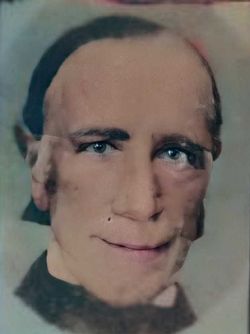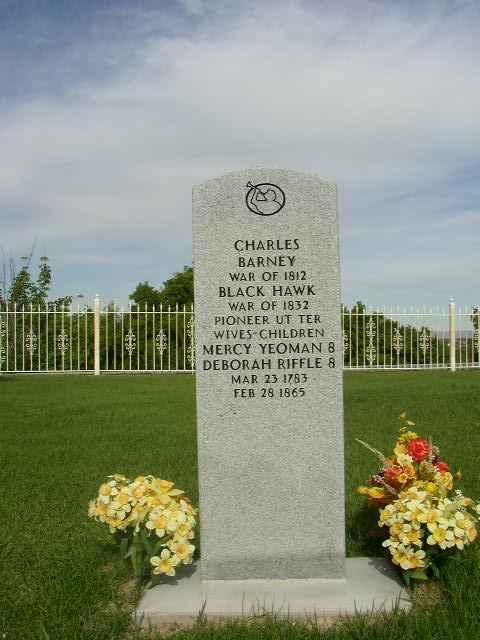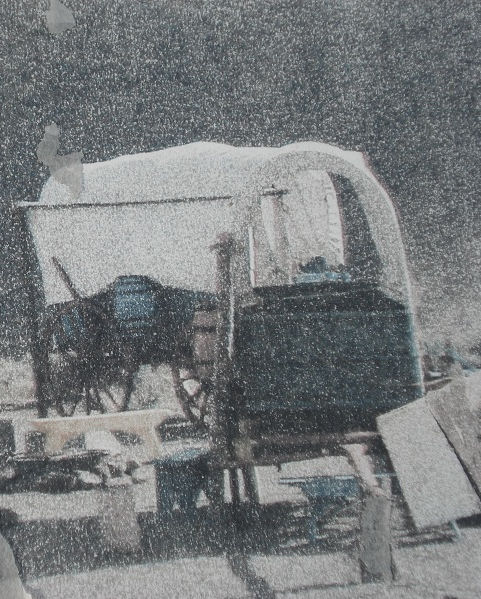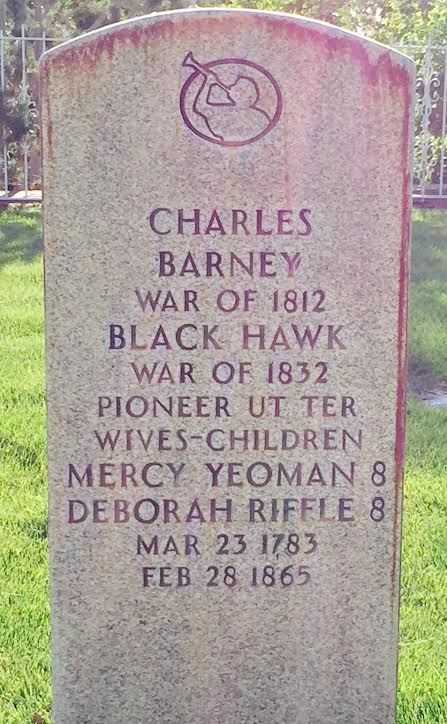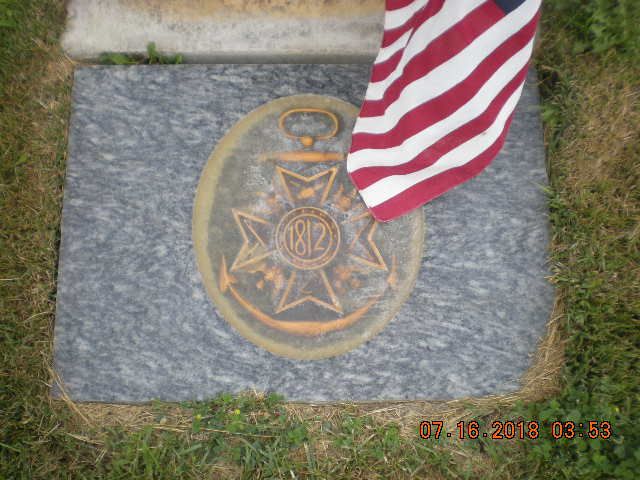On his way to Sangamon County, Illinois, Charles married Deborah Riffle September 21, 1826. The family eventually moved to Henry County, Iowa and it was here that Mormon missionaries contacted the family. Converting to Mormonism, the family joined the main body of saints in Nauvoo, about 60 miles away. Accustomed to farm life, Charles purchased a quarter section of farmland about 12 miles from Nauvoo near Carthage, Illinois. Through persecution, all of Charles’ remaining family, except Emeine and Elizabeth Barney, who both married Benjamin Leland, and Luther and Lucian Barney who went to Texas, joined the western movement and arrived in Salt Lake Valley in 1852.
Known as Palmyra, a new settlement was opened west of Spanish Fork on the Spanish Fork River near the northeast shore of Utah Lake. In the “History of Spanish Fork”, Henry, Walter, Benjamin, Charles, John and Lewis Barney are listed as living in Palmyra. Because of scarcity of building material, Charles built one of the first dugouts near the Spanish Fork River. The “dug-outs” were places dug in the ground, usually four or five feet deep, with steps leading down into the room from one end, and a roof usually made of willows and mud. The dugouts were quite warm and comfortable during the winter, there being a fireplace in the end opposite the entrance. They were generally without windows, so in order to get light the door was left open, or the open fire was depended upon for illumination.
Indians were often unfriendly in those days and Charles and his family had many close encounters with them. Sometimes they had to travel to Spanish Fork for protection or huddling in boats under the willows on Utah Lake to escape. The family lived in Palmyra from 1852-1856. Because of an infestation of grasshopper in 1855 in the area, they devoured everything green. The summer of 1855-1856 was difficult for the settlers. Since nearly all of their provision was gone, the majority lived on fish caught in nearby Utah Lake and “pig-weed” (lambs quarter). Around 1856, Charles and family members moved to Spanish Fork and built a new home there. He applied for and received a land warrant from his service in the War of 1812. The land he received he then sold. Some time later Charles and some family members moved to Spring City, Sanpete County, Utah, where he lived. Through much hardship and persecution Charles Barney and his wife Deborah kept their faith and established a great heritage and a large posterity in the heart of the Rocky Mountain.
Charles died at the age of 81 at the home of his son, Benjamin Franklin Barney, in Lake Shore and was buried in an unmarked grave in the northwest corner of the Spanish Fork Cemetery. Charles’ wife Deborah applied for a widow’s pension since Charles had served in the War of 1812. She received $8.00 a month pension (later increased to $12.00) and went to live with Hannah Stoddard Barney, the widow of her son William. William Street Barney fell from a horse and was dragged to death in Spring City, Utah, where he was living. Deborah helped support Hannah and her four small children with the small widow’s pension. She died at Spring City September 18, 1888, where she is buried.
Charles and Deborah’s children are: Emeine (1828-1842), Elizabeth “Betsy” (1830-1878), Louisa (1831-1831), Margaret Matilda (1843-1915), Thomas Jefferson (1836-1862), William Street (1841-1875), Sarah Jane (1845-1934).
Nolan and Kaye Barney compiled the information in 1981 from which this biography was taken. For a comprehensive history of Charles Barney, read: Barney, Ronald O., “One Side by Himself – The Life and Times of Lewis Barney 1808-1894”, Utah State University Press, 2001.
On his way to Sangamon County, Illinois, Charles married Deborah Riffle September 21, 1826. The family eventually moved to Henry County, Iowa and it was here that Mormon missionaries contacted the family. Converting to Mormonism, the family joined the main body of saints in Nauvoo, about 60 miles away. Accustomed to farm life, Charles purchased a quarter section of farmland about 12 miles from Nauvoo near Carthage, Illinois. Through persecution, all of Charles’ remaining family, except Emeine and Elizabeth Barney, who both married Benjamin Leland, and Luther and Lucian Barney who went to Texas, joined the western movement and arrived in Salt Lake Valley in 1852.
Known as Palmyra, a new settlement was opened west of Spanish Fork on the Spanish Fork River near the northeast shore of Utah Lake. In the “History of Spanish Fork”, Henry, Walter, Benjamin, Charles, John and Lewis Barney are listed as living in Palmyra. Because of scarcity of building material, Charles built one of the first dugouts near the Spanish Fork River. The “dug-outs” were places dug in the ground, usually four or five feet deep, with steps leading down into the room from one end, and a roof usually made of willows and mud. The dugouts were quite warm and comfortable during the winter, there being a fireplace in the end opposite the entrance. They were generally without windows, so in order to get light the door was left open, or the open fire was depended upon for illumination.
Indians were often unfriendly in those days and Charles and his family had many close encounters with them. Sometimes they had to travel to Spanish Fork for protection or huddling in boats under the willows on Utah Lake to escape. The family lived in Palmyra from 1852-1856. Because of an infestation of grasshopper in 1855 in the area, they devoured everything green. The summer of 1855-1856 was difficult for the settlers. Since nearly all of their provision was gone, the majority lived on fish caught in nearby Utah Lake and “pig-weed” (lambs quarter). Around 1856, Charles and family members moved to Spanish Fork and built a new home there. He applied for and received a land warrant from his service in the War of 1812. The land he received he then sold. Some time later Charles and some family members moved to Spring City, Sanpete County, Utah, where he lived. Through much hardship and persecution Charles Barney and his wife Deborah kept their faith and established a great heritage and a large posterity in the heart of the Rocky Mountain.
Charles died at the age of 81 at the home of his son, Benjamin Franklin Barney, in Lake Shore and was buried in an unmarked grave in the northwest corner of the Spanish Fork Cemetery. Charles’ wife Deborah applied for a widow’s pension since Charles had served in the War of 1812. She received $8.00 a month pension (later increased to $12.00) and went to live with Hannah Stoddard Barney, the widow of her son William. William Street Barney fell from a horse and was dragged to death in Spring City, Utah, where he was living. Deborah helped support Hannah and her four small children with the small widow’s pension. She died at Spring City September 18, 1888, where she is buried.
Charles and Deborah’s children are: Emeine (1828-1842), Elizabeth “Betsy” (1830-1878), Louisa (1831-1831), Margaret Matilda (1843-1915), Thomas Jefferson (1836-1862), William Street (1841-1875), Sarah Jane (1845-1934).
Nolan and Kaye Barney compiled the information in 1981 from which this biography was taken. For a comprehensive history of Charles Barney, read: Barney, Ronald O., “One Side by Himself – The Life and Times of Lewis Barney 1808-1894”, Utah State University Press, 2001.
Inscription
War of 1812
Blackhawk
War of 1832
Pioneer UT Ter
